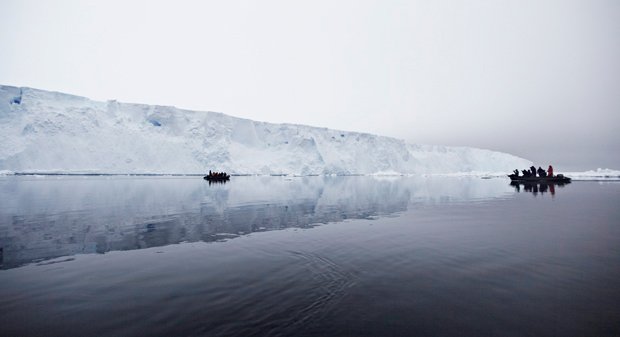Antarctic expedition: icebergs

AG designer Mike Rossi set sail on the AG Society expedition to Antarctica, where the ship trudged its way through icebergs.
Some of the most enduring images of Antarctica for me are the icebergs – they have an ethereal beauty, dancing slowly, silently through near freezing Antarctic waters.
Typically only about one-ninth of an iceberg is visible above the water, but this can vary depending on its density compared to the density of the surrounding sea water. Each iceberg is unique, and they come in all different colours, shapes and sizes, which can reveal a lot about a particular iceberg’s origin and formation.

LAUNCH THE GALLERY
White icebergs tend to be less dense, often formed from compacted snow and ice from the top layers of an ice shelf – these tend to weather and disintegrate faster. Deep blue or clear icebergs tend to indicate dense ice that has been formed under great pressure, often originating from a calving glacier or deep within an ice shelf. Tabular bergs are easily identifiable by their flat tops and geometric shape, and usually originate from a breaking ice shelf.
They can be absolutely enormous in size – one of the icebergs we came across looked more like a stretch of Antarctic coastline, extending as far as the eye could see in both directions and rising 100m vertically out of the sea to dwarf our ship. Its area was estimated to be 2,500 sq. km – about the size of Luxembourg.
As these vast icebergs disintegrate and break up, sometimes over a period of many years, they are sculpted by wind and water to form stunning shapes. They tend to deteriorate more quickly above the water surface than below, though occasionally when an iceberg becomes top heavy, it will roll over and become what is known as a rolled berg. These are identified as being smoother and more rounded in shape than tabular bergs. As these bergs break down into smaller pieces, they become bergy bits (up to 7m) and then brash ice (small chunks of ice).
Sea water freezes at a temperature of -1.8ºC, and is known as fast ice. When icebergs are caught in a freezing sea they are locked together to form pack ice, which can be treacherous to navigate.
See more AG Antarctica expedition blogs.
RELATED STORIES


